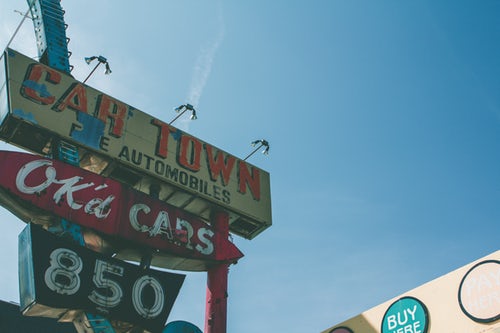IT’S FAIR TO SAY THAT things in the car business are in a state of flux, and car buyers, both new and used, are very confused.
New cars are in short supply, mostly due to a shortage of essential computer microchips. When COVID-19 hit, predictions of a huge fall in new car sales caused many manufacturers to cancel their orders for microchips and other externally-sourced parts. When sales didn’t plummet anywhere as far as feared, those same manufacturers went back and reinstated their orders, but many microchip manufacturers had already found new markets for their products in smartphones, electronic devices televisions and the like and were unable to re-establish supply quickly enough for the car companies. Suppliers of other components also found it difficult to quickly re-start production.
And as we all know, when demand is high and supply is low, prices will rise.
The natural knock-on effect is that used car trade-in prices have increased, especially on late model used cars that are a real alternative for many buyers.
While used cars are in demand throughout Australia as people avoid public transport and return to the roads in their own cars, reports of a 30 percent surge in prices are exaggerated. Most dealers suggest 10 percent is more realistic, but it varies depending on the popularity of the model.
According to data from Moody’s Analytics, July used-vehicle prices broke records for a second month running, recording a 16.2 percent rise on pre-pandemic prices and a whopping 30.8 percent increase on prices during the April 2020 slump.
“To put that in perspective, used-vehicle prices rose only 23 percent from the depths of the 2008-2009 global financial crisis to the beginning of 2020,” Moody’s Analytics said in its July report.
“The scale of the supply shortages differs among brands and it differs among models, but many dealers are still reporting shortages and delays,” James Voortman, CEO of the Australian Automotive Dealer Association (AADA), explained.
Additionally, domestic air travel declined by 92.6 percent in May, meaning many interstate travellers took to the road for their family holidays and business trips.
Another factor is businesses and rental companies holding onto their current vehicles, squeezing the supply of good late-model used cars.
The price increases are also flowing through to classic and collectable cars.
The late-July online auction conducted by Grays fetched a total of $816,527 for its top five cars and generating a never-before-seen 1,281,007 page views from interested shoppers.
Part of the reason is that buyers are flush with cash they might otherwise have spent on overseas travel, dining out or other entertainments that were denied to them, or less popular during the pandemic.
Will it last?
According to Moody’s Analytics, it’s best to “expect the unexpected” when it comes to how used and new car prices will fluctuate for the remainder of 2020.
“Prices for 2020 likely peaked in July, but will remain elevated compared to 2019,” the firm said in its report.
However, used vehicle prices should soften over the coming months as more sellers enter the market to take advantage of high prices – thereby easing supply constraints – and demand is expected to remain “muted” due to waning consumer confidence.
Additionally, the used car surge could actually have a beneficial effect on new car sales, with many shoppers turning their attention to new stock as used cars become increasingly expensive.
The only factor that could prevent this revival of the new-car market would be a re-strengthening of the Japanese yen and Korean won versus the Australian dollar, Moody’s Analytics explained.
“Most vehicles in Australia are imported from either Japan or Korea. If currencies were to appreciate considerably as they did in March, this would make new vehicles more expensive compared with the used-vehicle market.”

A chance for buyers to cash in
Here at seniordriveraus we’ve had readers relate some remarkable stories.
One reader told us that he was offered a “quite reasonable” $38,000 trade-in on his VW Golf GTI for a brand-new European import. He decided to advertise his car privately to see if he could improve the price and advertised it for $41,500. Within hours of listing the car, he was approached by a Volkswagen dealer who knew the car (and having trouble sourcing stock through wholesalers) and offered $43,000. Naturally, he accepted the offer.
Another reader tells us she was offered $42,000 trade-in on her three-year-old Jeep Wrangler on a new Mitsubishi Pajero Sport, a remarkable return since she tells us she paid $46,000 for the Jeep when it was new. Perhaps even more astounding, another reader was very pleased to be offered $12,000 trade-in on his wife’s 2012 Mazda2 Neo. Admittedly it was an auto and had low mileage, but the original purchase price, ten years ago, was $14,000 before on road costs.
Yet another reader was taken aback to see the price of a two-year-old second-hand car he was considering was higher than the current new car list price. But when he approached a dealer to buy a new car, was told delivery couldn’t be guaranteed until September or even later. Many readers have had to settle for their second or third choice new car because many models are now being quoted as “delivery late in the year”.
The downside, of course, is that with new cars difficult to obtain, especially in the specification and with the options you desire, your ability to haggle is reduced. And many of the cars coming into the country have been highly specified with expensive options that you may not want but will have to accept (and pay for) to get the car of your choice.
Surprisingly, we can see little indication that new car prices have risen to any significant extent. But that could change at any time.
